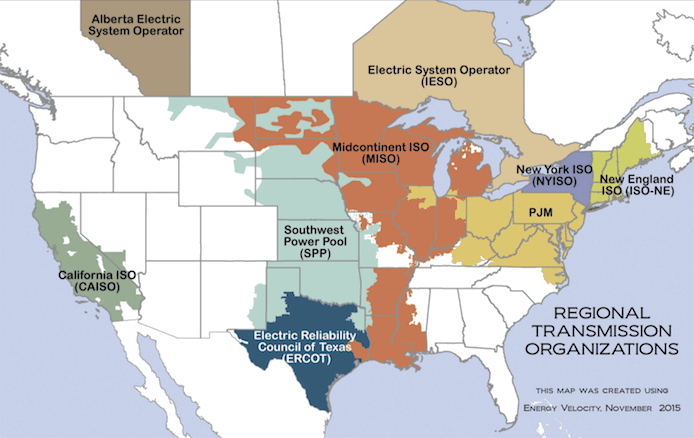Regional Transmission Organizations (RTOs)

The U.S. has 7 Regional Transmission Organizations (RTOs)* where utilities and other high-voltage transmission owners pool their transmission assets for greater efficiency over a larger network. RTOs also operate competitive wholesale electricity markets, where electricity generators bid their supply into the market and the lowest-cost bids are dispatched first. RTOs are regulated by the Federal Energy Regulatory Commission (FERC) because they engage in interstate commerce (except ERCOT because it is entirely contained within Texas). An RTO is defined by 12 minimum characteristics (details here).
The White Non-RTO regions are served by individual utilities regulated by state Public Utility Commissions (PUCs or PSCs). These may be vertically-integrated monopoly utilities operating on "cost-of-service" utility revenue models (like Xcel Energy or Black Hills Energy in Colorado), or non-profit municipal utilities or co-ops, many served by "Generation and Transmission" (G&T) Cooperatives like Tri-State (more here).
The U.S. has 66 "Balancing Authorities" that ensure electric reliability and balance electricity supply and demand at every moment. RTOs serve the balancing function in their territories, and individual utilities are the balancing authorities elsewhere (see balancing authority map).
Source: FERC || Better FERC map
*RTOs are similar to ISOs ("Independent System Operators") or TSOs ("Transmission System Operators"). These terms are often used interchangeably.